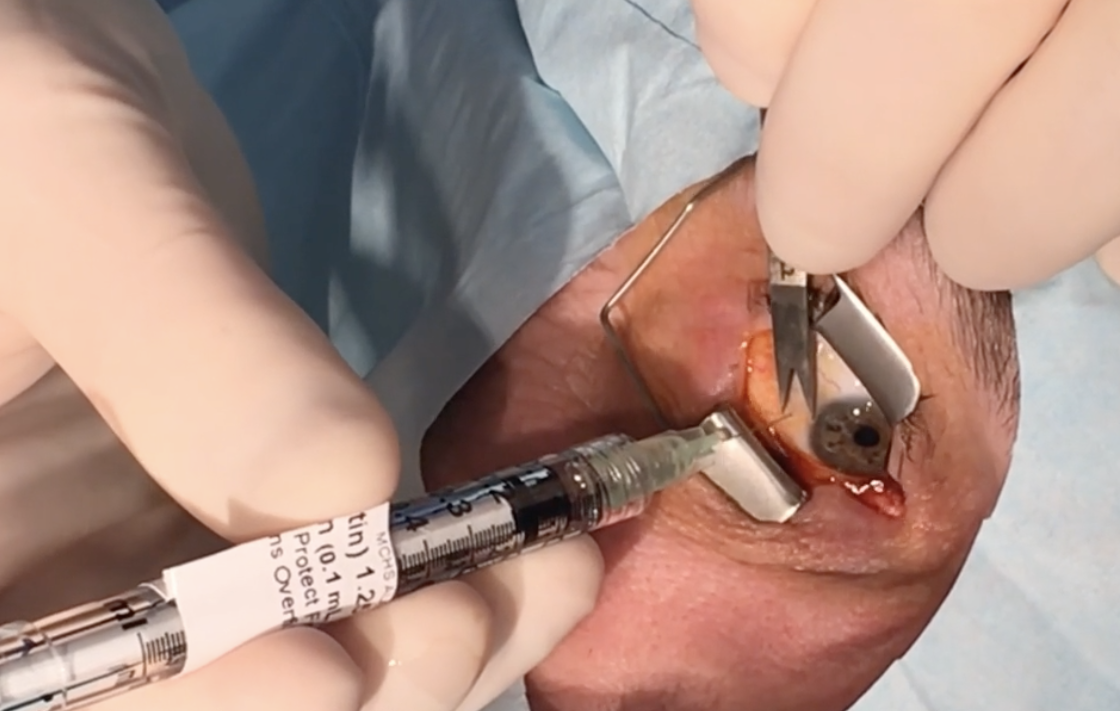 |
| VA gains were most beneficial in eyes with lower baseline acuity, and mean VA was maintained long-term if patient adherence was sufficient. Photo: Leo Skorin, OD. Click image to enlarge. |
Short-term efficacy of anti-VEGF therapy in neovascular age-related macular degeneration (nAMD) using PRN regimens has been demonstrated in previous clinical trials, but few studies have reported long-term outcomes. In a new study, researchers evaluated 10-year outcomes and found that visual acuity (VA) was maintained for the duration of the study period; patients averaged six injections per year.
A total of 3,008 patients receiving intravitreal injection for nAMD between January 2008 and December 2020 were searched from electronic medical records.
Proportions of eyes within 15 letters of baseline were 88%, 87%, 82%, 80%, 76% and 72% at the end of years one, two, three, five, seven and 10, respectively. The median number of annual injections was six at years one through seven and five at year 10. The median number of annual total visits was 10 at year one, nine at years two through seven, and eight at year 10, respectively.
“Overall, VA gains were most beneficial in eyes with lower baseline VA and mean VA was maintained long-term with PRN regimen if patient adherence was sufficient,” the authors explained in a recent paper on the study.
There was no significant difference in VA gain between the eyes that received ≥10 injections and those that received fewer than 10 during the first treatment year, after adjusting for the effect of baseline VA. “This may suggest that some eyes gain VA with less frequent injections while some eyes need more frequent injections,” the authors explained. “Using PRN treatment regimen with frequent visits is possible to find the eyes which need more frequent injections.”
Authors found that 88% and 87% of eyes retained stable vision at years one and two, respectively. There was an increase in proportion of good VA from 25% at baseline to 32% at year two and an increase in the proportion of eyes with poor VA from 4% at baseline to 5% at year two.
Two previous studies with more consistent injection rate with mean of 5.4 injections in the first year followed by four to 4.3 per year demonstrated better VA outcomes compared with study with median of six injections in the first year followed by two to three injection/year in years two through seven and three to five injection/year in years eight to 10. This indicates that VA is maintained more likely if injections are given evenly, the authors suggest.
Dropout percentage was high, similar to previous studies. “Differences in treatment protocols between clinics may explain differences in dropout rates reported in real-world studies; for example, treatment and patient observation can carry on longer with poor VA in some clinics, whereas treatment would be stopped in other clinics with same VA and patient is thus lost to follow-up,” the authors concluded.
Hujanen P, Ruha H, Lehtonen E, et al. Ten-year real-world outcomes of antivascular endothelial growth factor therapy in neovascular age-related macular degeneration using pro re nata regimen. BMJ Open Ophthamol. August 1, 2023. [Epub ahead of print.] |

